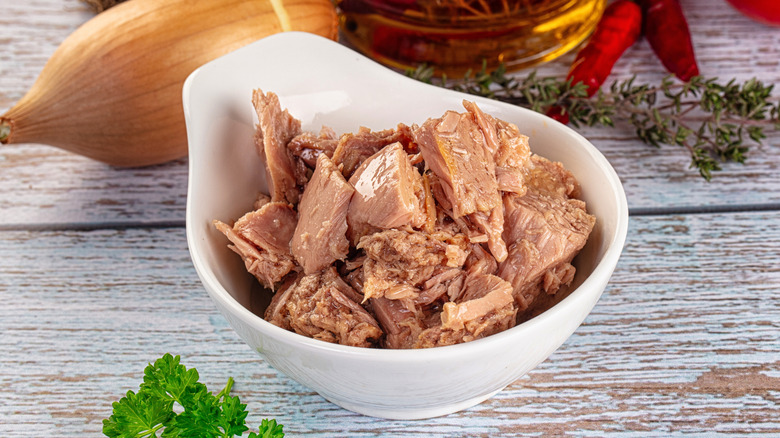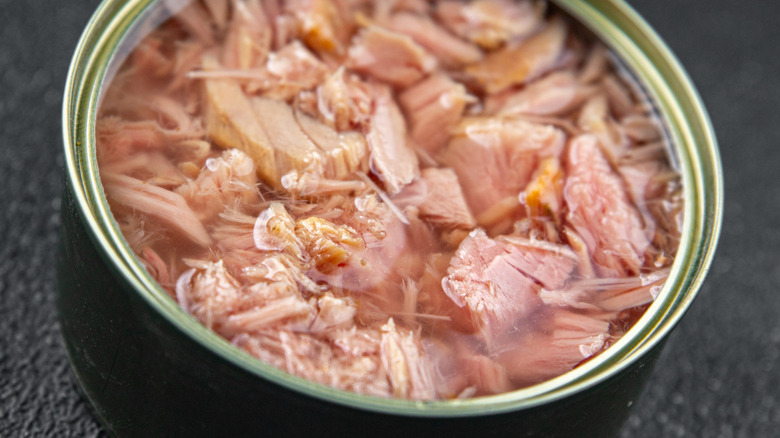The Easiest Way To Tell Solid Tuna Apart From Chunk
A wide variety of canned tuna is available at any given grocery store, from different brands to tuna packed in water or oil. When you take a closer look at the tinned fish, you'll see another key distinction, and that's whether the tuna is sold as solid or chunk. Knowing how to differentiate the two can be important, depending on how you plan to use the fish.
The distinction between solid and chunk tuna really comes down to the size and dimension of the pieces in the can. This doesn't relate directly to a specific variety of tuna, but rather how the fish is processed. Chunk (or chunk light) tuna will be cut into smaller pieces, appearing as flakes or shreds. When you crack open a can of solid tuna, you'll instead find larger and intact pieces of fish. Given the different sizes of these pieces, you can also expect different textures. For example, chunk tuna will provide a softer and flakier bite, whereas solid options will be firmer and meatier.
Other differences between chunk and solid canned tuna
To obtain chunk and solid tuna, the meat is cut into different sizes from the loin. Solid tuna describes a single-cut from the steak, and will usually be packed as one large piece. Meanwhile, the flakes of chunk or chunk light tuna will be processed into smaller pieces, and are often sourced from smaller species. In addition to how the tuna is cut, it might also be cooked differently. In case you're wondering, chunk tuna is usually cooked twice — once it's cut and after packaging, unlike solid tuna.
When it comes to how to use the two types of tuna, either can be used in most recipes. However, dishes like our spruced up tuna salad might benefit best from chunk tuna since it can be evenly mixed into the creamy salad without the risk of drying out. If you prefer larger pieces of tuna, large bits of solid tuna are ideal to showcase in recipes like our zippy tuna pasta salad or dilly tuna casserole.

